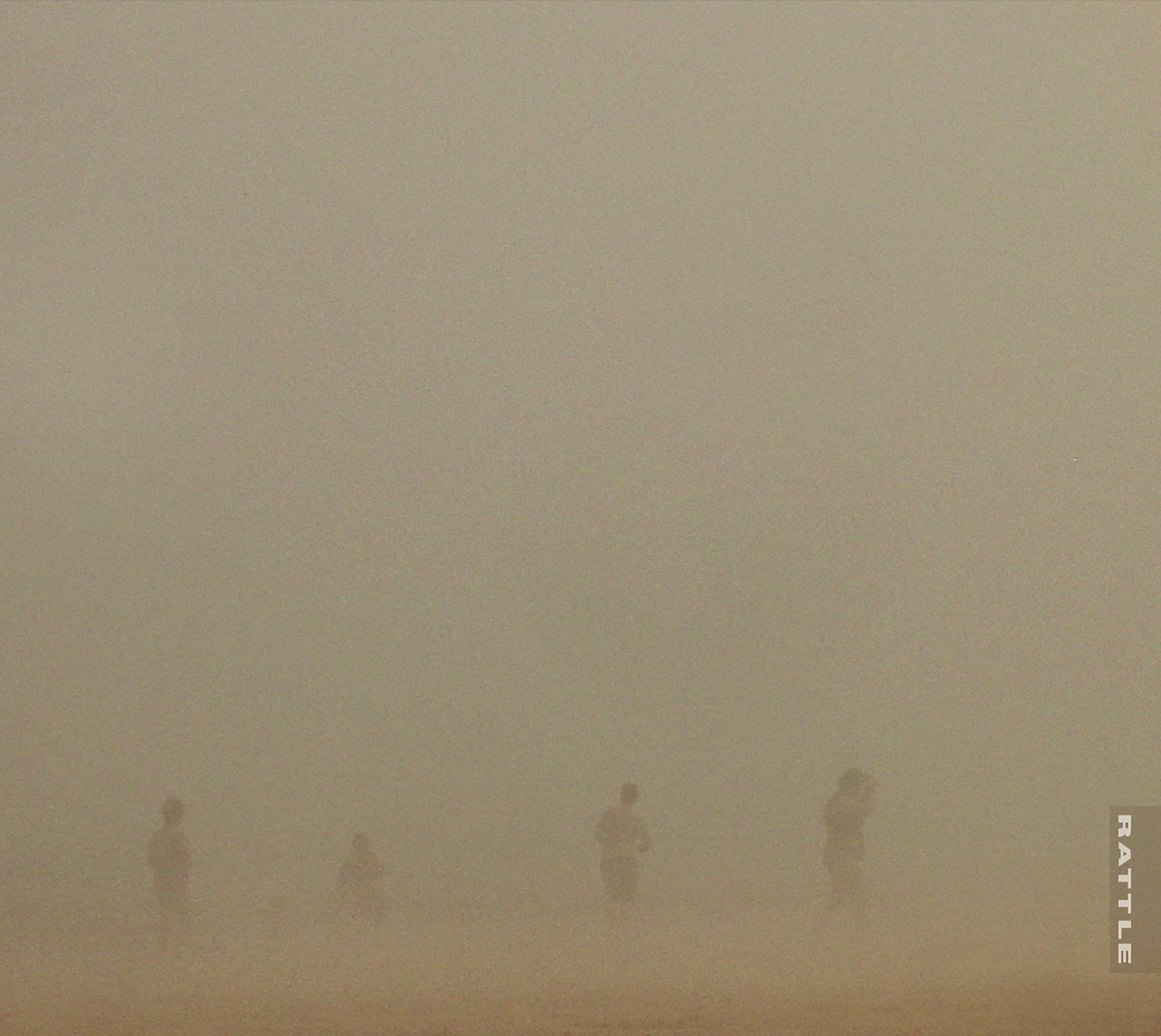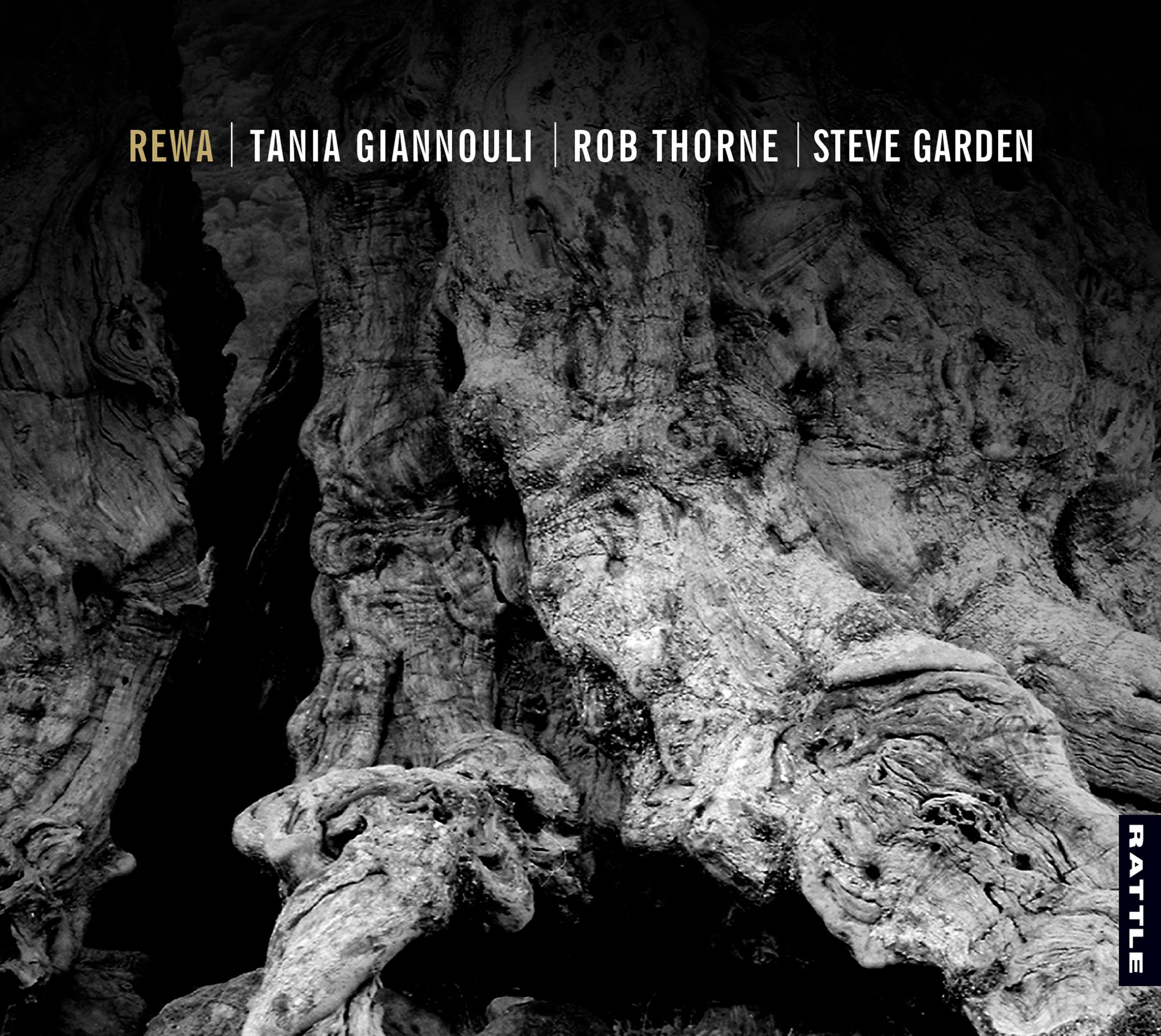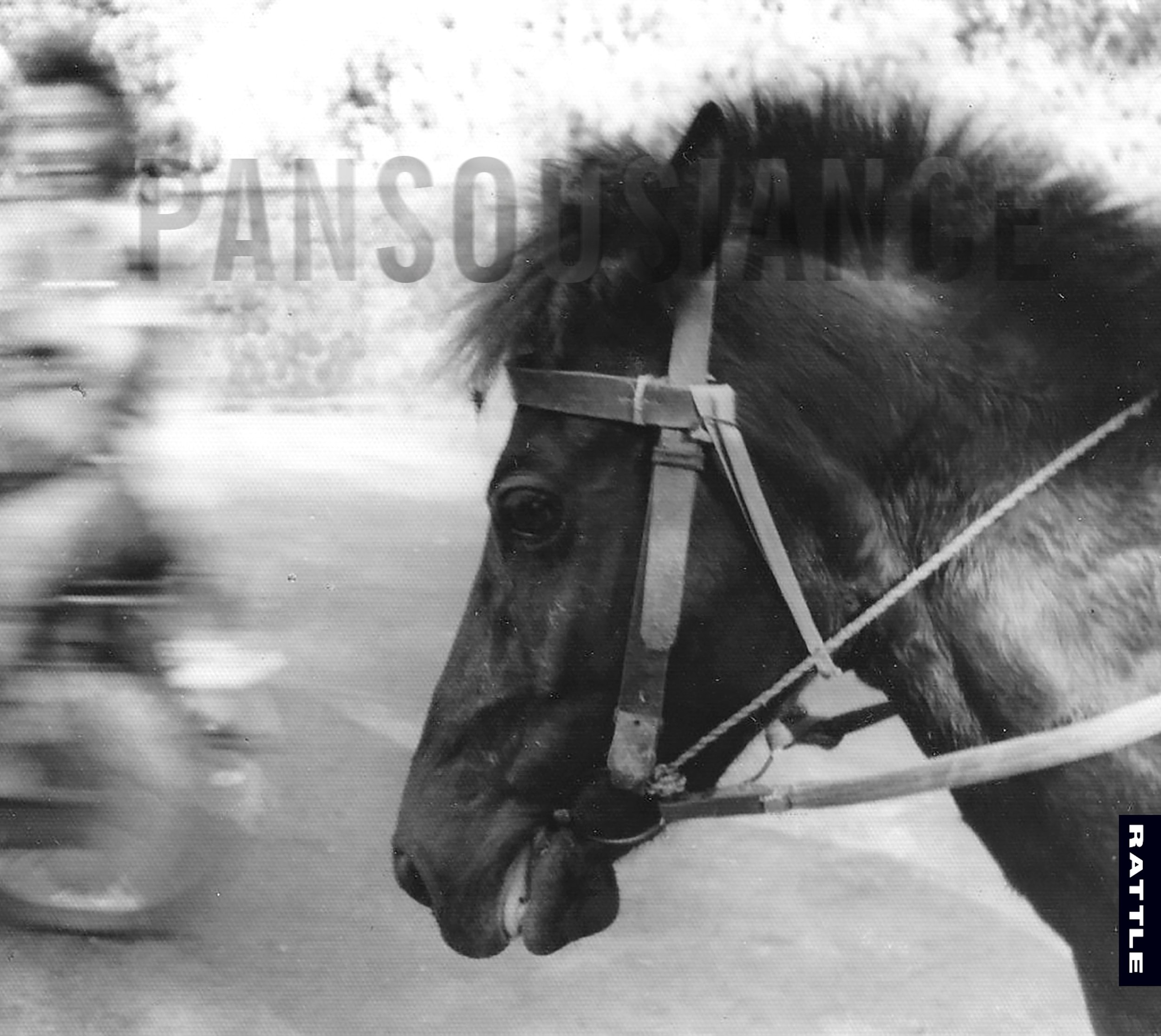BEGINNINGS
Rattle Records released its first album, Gitbox Rebellion’s Pesky Digits, in 1991. Tim Gummer, Keith Hill and Steve Garden shared a vision for a music label that would champion a diverse but carefully curated collection of contemporary instrumental recordings. We envisaged Rattle as an artist-focused advocate for those seeking to create new music unfettered by commercial pressures or constraints.
Inspired by European label ECM and New Zealand's own Flying Nun, we sought to establish a platform for music that wasn’t adequately supported by the labels of the day. Encouraged by the critical success of Pesky Digits and Songs For Heroes (From Scratch), we worked with a number of composers and performers for our next release, Different Tracks. This album would set the tone and general direction for the label and was the impetus for many projects to follow. The first of these was the seminal debut of Richard Nunns and Hirini Melbourne.
HIRINI MELBOURNE, RICHARD NUNNS AND TE TAONGA PUORO
Few would have predicted the impact and lasting influence of the groundbreaking Te Ku Te Whe, or the major role it would play in the revival of taonga pūoro (the traditional instruments of Maori). Two weeks were set aside to record the album, but by lunch on day two Te Ku Te Whe was in the can. It remains Rattle’s biggest selling and most influential release.
Recorded only a few weeks before Hirini’s death, Te Hekenga-a-rangi wasn’t a follow up to Te Ku Te Whe so much as a broadening of its themes and concepts, this time with greater emphasis on the feminine dimension of taonga pūoro. To this end, Aroha Yates-Smith joined Richard and Hirini to produce a work that is still one of Rattle’s most emotionally affecting and widely beloved albums.
In 2005, Rattle invited a number of New Zealand’s finest remix artists to interpret Te Ku Te Whe, in part to go some way towards realising Hirini’s hope that taonga pūoro will be more widely integrated into the cultural landscape of Aotearoa. Awarded Best Maori Album at the 2007 NZ Music Awards, Te Whaiao is a successful fusion of ancient and contemporary voices.
Richard Nunns was one of Rattle’s most important collaborators, and with each new project, he situated taonga pūoro in an increasingly broad range of contexts, from Gillian Whitehead’s Ipu to improvisational collaborations with Judy Bailey (Tuhonohono), the Chris Mason-Battley Group (Two Tides), Dave Lisik (Queen’s Diamond, Ancient Astronaut Theory, Journey/Hikoi), American pianist Marilyn Crispell and NZ saxophonist Jeff Henderson (This Appearing World), Whirimako Black (Te More), and finally Utterance made with David Long and Natalia Mann, the last recording he would make before laying down his vast array of taonga pūoro due to the onset of Parkinson’s Disease. Richard passed away on June 7, 2021.
CHAMBER MUSIC
The inclusion of "Matre’s Dance" on Different Tracks initiated another important collaborative thread for Rattle. It not only led to the recording of Dan Poynton’s You Hit Him He Cry Out (Best Classical Album, 1997) and Michael Houstoun's Inland (Best Classical Album, 2007), but to a series of albums by one of New Zealand’s brightest stars, John Psathas.
John’s acclaimed debut, Rhythm Spike (Best Classical Album, 1999), was followed by View From Olympus (Best Classical Album, 2006). Consisting of three concerti for orchestra and soloists, this monumental project was the most ambitious classical recording ever undertaken in New Zealand. Featuring world-class performances from pianist Michael Houstoun, percussionist Pedro Carneiro, contemporary saxophonist Joshua Redman, drummer Lance Philip, and the New Zealand Symphony Orchestra conducted by Marc Taddei, the album was an enormous critical, popular, and cultural success. Complete with an informative DVD by Keith Hill, it was on the classical charts for more than a year and held the number one spot for an unprecedented six consecutive months.
John has released or collaborated on a number of Rattle releases since, including Ukiyo (Best Classical Album finalist, 2010), Helix (Best Classical Album finalist, 2011), Flight on Light (with Manos Achalinotopoulos), The Harvest (with Adam Page and James Brown), The Gaia Theory (with Omar Carmenates), Mantis (with Reuben Bradley), White Lies (the soundtrack to a film directed by Dana Rotberg staring Whirimako Black), and Dialogos with the Chris Mason-Battley Group.
Rattle enjoys a mutually creative and productive relationship with Auckland-based piano trio NZTrio and New Zealand’s foremost concert pianist, Michael Houstoun. The trio have released several albums since their Rattle debut in 2007, bright tide moving between (Best Classical Album finalist, 2008), including Flourishes (Best Classical finalist, 2010), Lightbox (2015), Sway (Best Classical Album, 2017), Vicissitudes (Best Jazz finalist, 2017), and Merge (Best Classical finalist, 2022). They have also contributed excellent performances to Psathas’s Helix and Jack Body’s Passing By (2015).
Michael Houstoun’s debut on Rattle in 2007 with his stunning Album of the Year release, Inland, was the first in a series of award-winning albums: Lilburn (Album of the Year, 2013); his monumental 14-CD masterwork, The Complete Beethoven Piano Sonatas (Album of the Year, 2015); 24 Tone Clocks (Album of the Year finalist for Jenny McLeod in 2016); Diabelli Variations (2017); Trois (Album of the Year finalist in 2018); the complete Beethoven Violin Sonatas with superb violinist Bella Hristova (Album of the Year finalist in 2019); the complete Brahms Intermezzi (2022); the complete Brahms Violin Sonatas with Bella (2022); and two xcellent releases in 2024, Revelier (a programme of French violin music, again with Bella) and the complete Bach Preludes and Fugues presented in a beautiful four CD set.
In September 2011, Jonathan Besser followed his 2006 Rattle debut, Turn, with the mesmerising Campursari, an album that takes its title from an Indonesian musical term used to denote the musical combination of gamelan with Western instruments. While Jonathan often worked with gamelan, this was the first time he had written specifically for the instruments. Commenting on Dave Lisik's The Curse of the Queen’s Diamond in 2011, William Dart said it was “the perfect vindication of Rattle’s philosophy [of eschewing] musical barriers'. The same can be said about Campursari, an enigmatic but wholly approachable album that will cast a tranquil and meditative spell upon willing listeners.
Another excellent addition to the Rattle catalogue in 2011 was Who's Most Lost? by Arcades (Dugal McKinnon and David Prior). Trained as composers and having played in bands, David and Dugal are inquisitive sonic omnivores who often cross the border between music and sound art. The album is an artfully composed and produced set of songs inspired by David and Dugal's ongoing infatuation with pop music, each track reflecting the duo's subversive pop sensibility. Singled out by William Dart as one of the standouts of the year, Who's Most Lost? is an exceptional work by any standard and one that re-positions the label’s goalposts in a fresh and welcome way.
IMPROVISED MUSIC
In 2009 we introduced an improvised music imprint with the release of Irony by Auckland jazz ensemble, FSH Trio. Our aim was to curate an eclectic catalogue of performance-based recordings of strong New Zealand improvised music. Roger Manins was next with his exceptional Trio (2011), which was followed by Reuben Bradley's award-winning Resonator (Best Jazz Album, 2011). Dave Lisik presented a string of fine recordings that included Walkabout (2013) with the Sydney-based Jazzgroove Mothership Orchestra, who would later release the superb Fiddes vs Tinkler on Rattle in 2016, Machaut Man and a Superman Hat (2014) featuring Donny McCaslin, and Ancient Astronaut Theory (2011), a fascinating collaboration with Richard Nunns.
Other highlights include Seven (Best Jazz finalist, 2012) by Tim Hopkins, Panacea (Best Jazz Album, 2016) by Phil Broadhurst, Dog (Best Jazz Album, 2014) by Dog, Nerve (Best Jazz finalist, 2014) by The Jac, Dark Light (Best Jazz finalist, 2014) and East West Moon (Best Jazz Album, 2017) by Jonathan Crayford, and four exceptional albums by pianist/composer, Tania Giannouli, starting with Forest Stories (2012) with Portuguese wind player, Paulo Chagas, Transcendence (2015) voted one of the top ten Greek jazz releases of the year, the globally-acclaimed Rewa (2018) with taonga puoro exponent, Rob Thorne, and In Fading Light (2020), another critical highlight featuring trumpet player Andreas Polyzogopoulos and oud player Kyriakos Tapakis.
MOVING ON
Tim Gummer and Keith Hill bowed out of Rattle in late 2009 and early 2011, respectively, each to pursue their own creative endeavours (Tim as a graphic designer and Keith as a writer and filmmaker). Steve Garden continues to take Rattle forward, drawing from the best of an ever-widening pool of emerging and established talent. His goal is to broaden the international reach of the label while continuing to develop its profile and influence at home.
New imprints such as RATTLE ECHO (which focuses on representing or, on occasion, reimagining works from New Zealand’s art music past), the SEVENTH HOUSE MUSIC series, a platform for predominantly improvised music. In recent years, Rattle has also taken a few steps towards the world of singer-songwriters, making it clear that we have no intention of slowing down in our fourth decade. With almost a third of the label’s output either winning or being nominated for awards, it’s fair to say that Rattle must be doing something right.
STREAMING
More than a decade ago, Rattle was visited by a senior executive of a major music rights service to ensure that its catalogue was fully available on all major streaming platforms. One of the great advantages to streaming, we were told, was as a counter to “the scourge of music piracy”: the illegal appropriation of the intellectual property of composers, performers, music publishers and distribution agencies. He also quoted the classic "streaming mantra" that if you're not visible on these platforms, you effectively don't exist.
Consequently, Rattle has gone from manufacturing a first run of 500-1000 CDs and seeing steady growth in download revenue to an average first run of 50-100 CDs today and a negligible trickle of downloads. Revenue from streaming barely covers the cost of coffee and stamps. So when it comes to "piracy", the impact of the so-called “illegal bad boys” proved to be a drop in the bucket compared to the devastation wrought by the "legal piracy" of streaming services such as Spotify, to the extent that now, to all intent and purposes, Rattle virtually doesn't exist. So much for the mantra, Mr Music Rights Executive!
GETTING INTO BED WITH THE BIG BOYS
Small independent labels like Rattle can only do so much. To do more, we need support. After an extremely busy 2011 when we released twenty-four albums — many of which were the result of Victoria University of Wellington's (VUW) PBRF funding rounds coming to a close and the need for these projects to be published — VUW approached Rattle with a proposal: they buy the label and put Rattle’s sole owner/manager Steve Garden on the payroll to maintain its direction with (as they proudly put it) "full editorial autonomy". It took a while, but eventually, in April 2013, Rattle was shoehorned into Victoria University Press (VUP) under the guiding managerial influence of Fergus Barrowman.
With a mandate to pursue approximately ten album projects a year, Rattle entered into what would prove to be a thirty-three-month relationship with VUW. In that time, the label released thirty-three highly acclaimed albums, including numerous award-winning and four to five-star releases such as Michael Houstoun's 14-album set of the complete Beethoven piano sonatas, a monumental undertaking that will forever be one of the finest musical achievements in the history of New Zealand art.
This wealth of high-quality cultural content was a Public Relations gift to VUW, entirely in accord with the objectives of VUW's New Zealand School of Music. It offered an extraordinary opportunity for VUW to engage with music lovers, music professionals, academics, and students across the globe, all for a relatively modest outlay. Alas, VUP had no budget for Rattle, and VUW had no intention of extending key services to the label, such as liaising with its legal and promotional wings. Rattle was left to manage as it always had — as an under-resourced one-man band.
In December 2015, VUW divested itself of Rattle, an action as inexplicable as its offer of support in 2012, the motivation and logic for which will remain one of life’s great mysteries.
Consequently, 2016 was a very tough year for Rattle. The label had nothing in the bank and was left with the task of completing and releasing four albums that had been approved and undertaken by VUW in 2015. With no resources to honour the commitment to those artists, Rattle nevertheless saw the projects through and released the recordings as promised. The experience taught us many things, not least the unreliability of self-serving corporate structures, but it also bolstered our determination to honour commitments and work even more diligently to ensure that New Zealand art music has an empathetic home for as long as one is required.
MORE TO COME ...




































